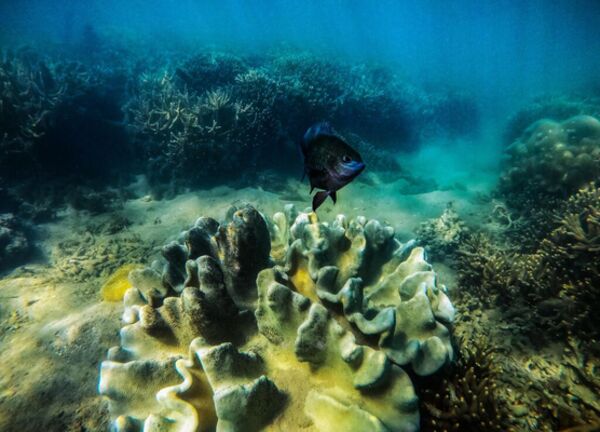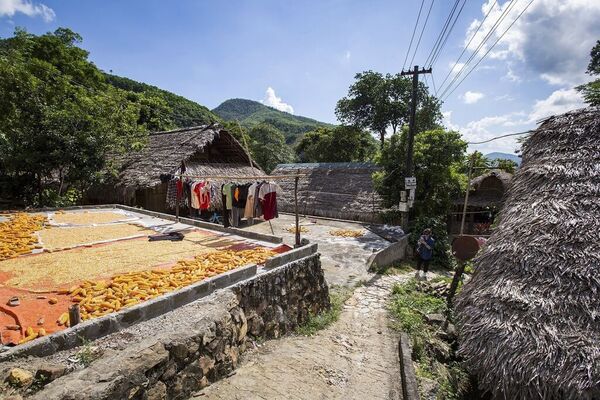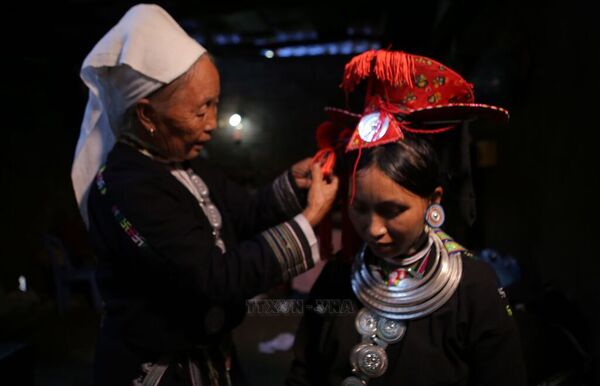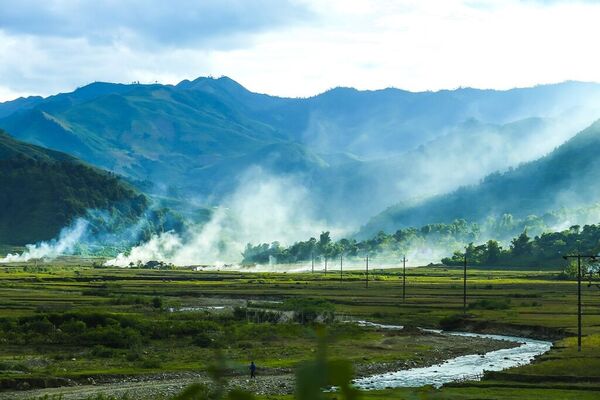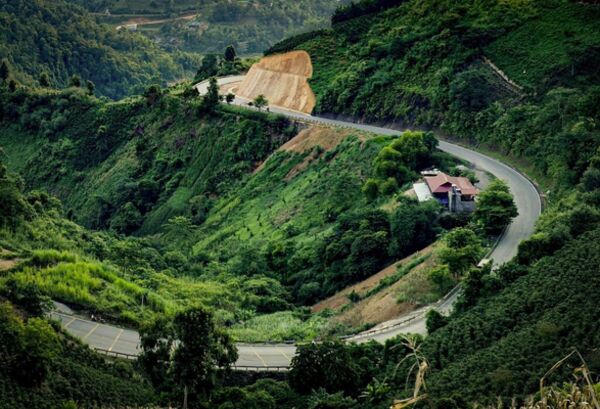


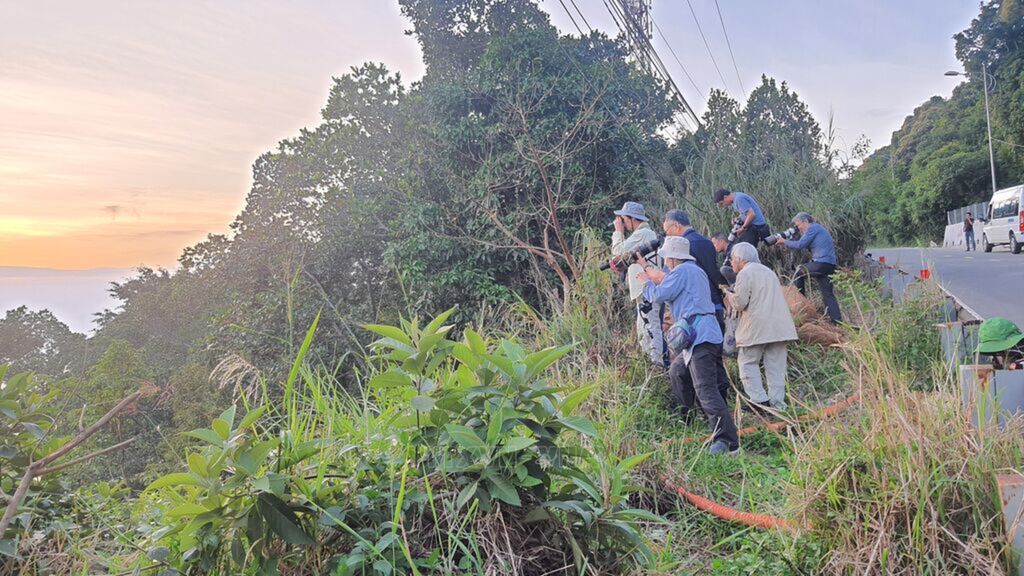
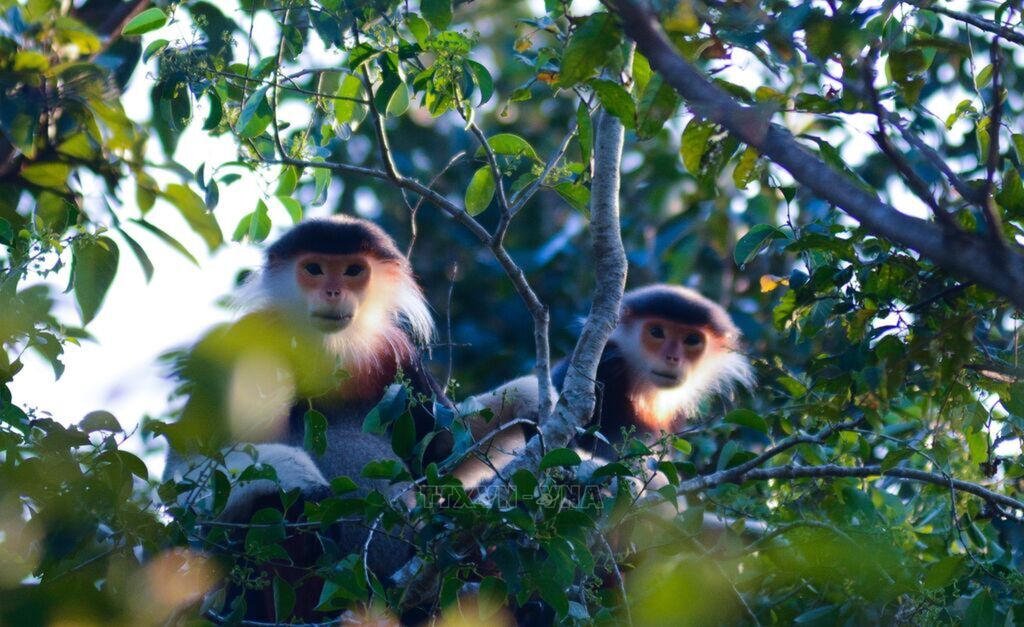
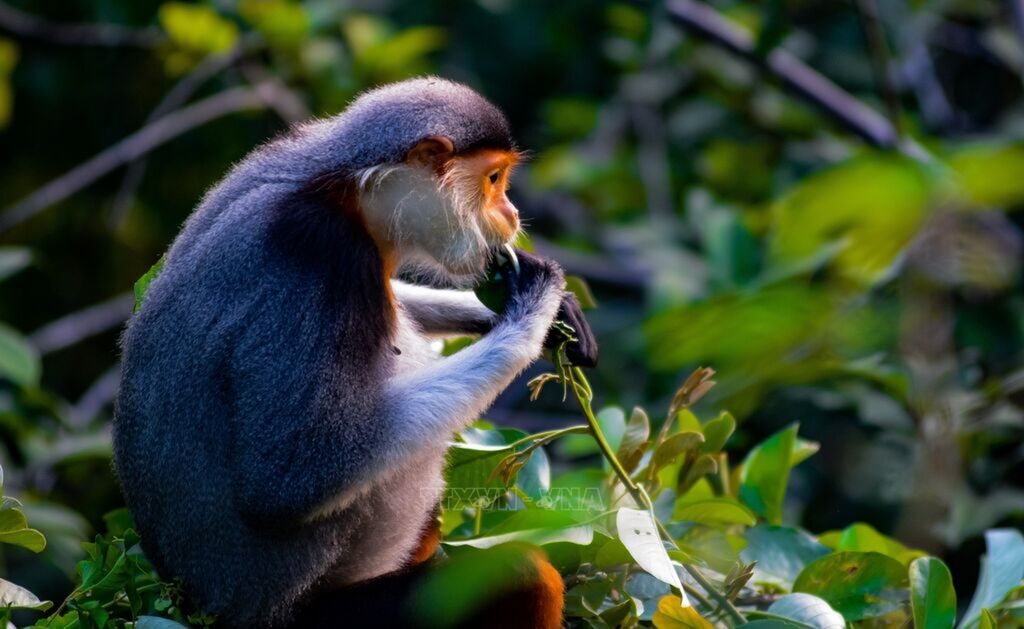
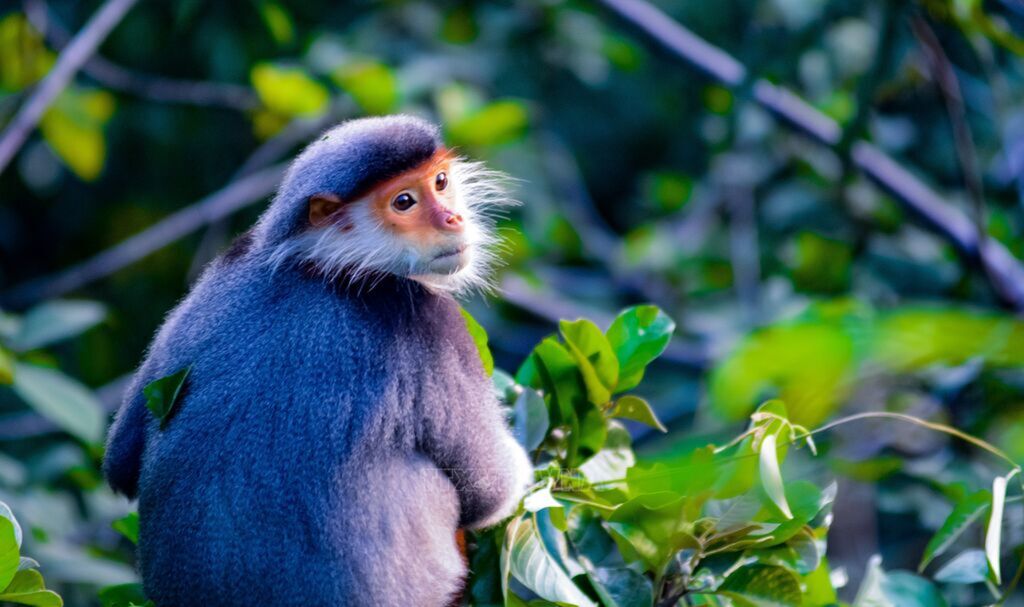
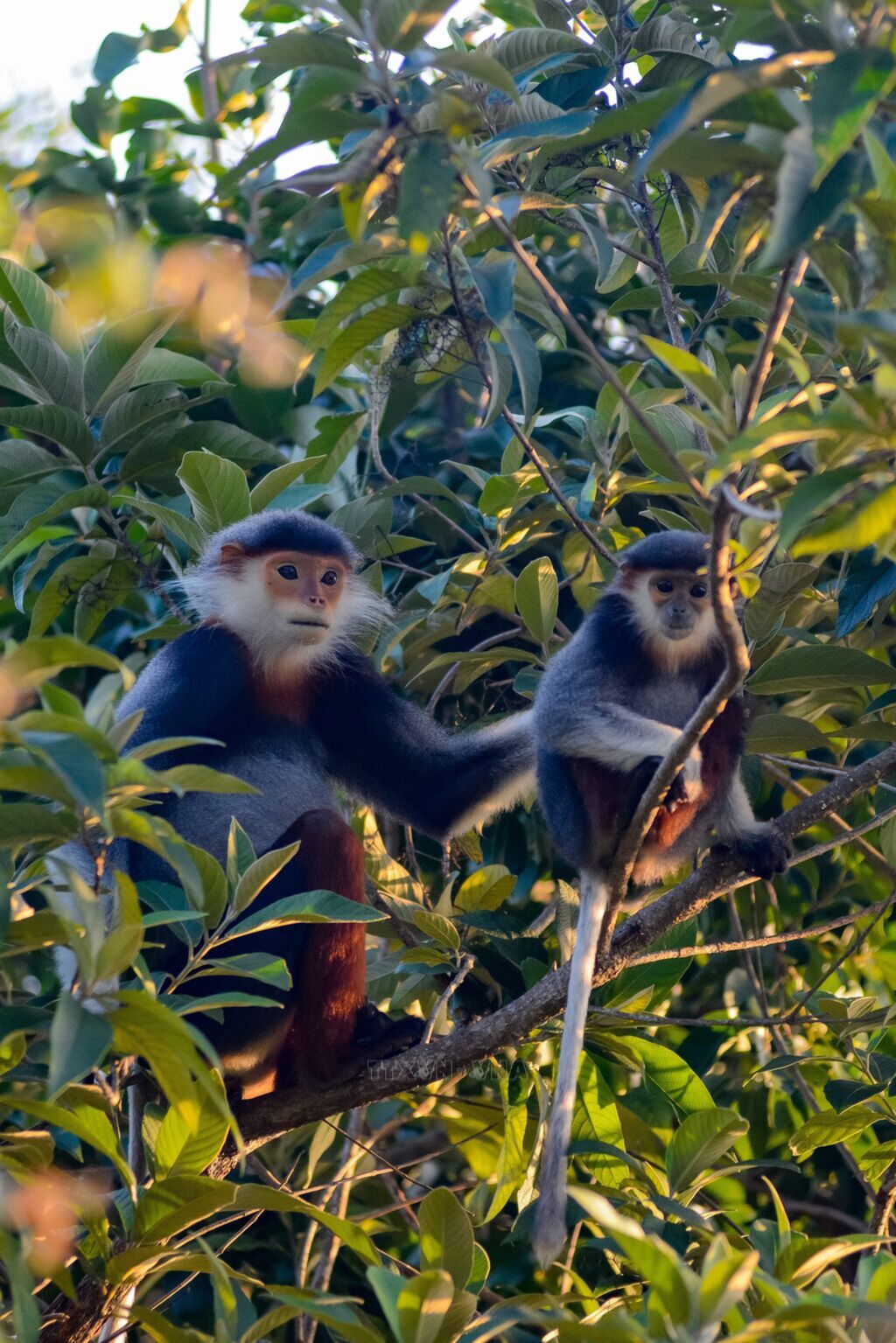
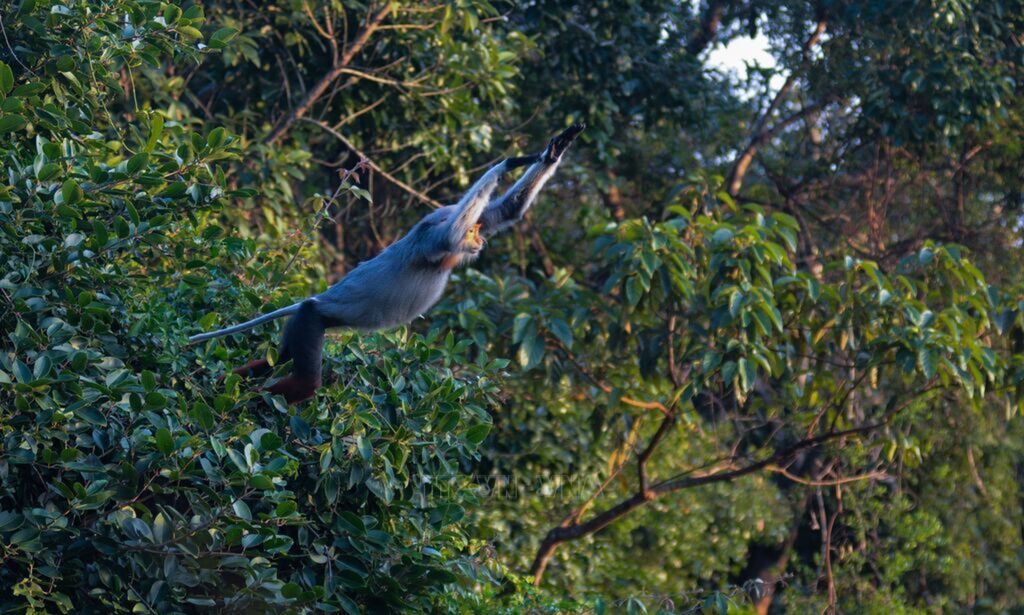








Queen of Primates attracts foreign tourists to Son Tra
Son Tra Peninsula, about 10km from the center of Da Nang City, offers an ideal habitat for the red-shanked douc langur, which has a population of about 1,300 individuals. A red-shanked douc langur has a tuft of white hair, maroon legs and white forearms. They often seek food on the Than mat (Millettia ichthyochtona) trees. Red-shanked douc langurs live in familiar groups and troops with 5-7 individuals in each herd. With a colourful body, these red-shanked douc langurs have been honoured by the International Union for the Conservation of Nature as the “Queen of Primates”. They attract numerous professional and amateur photographers to the peninsula. Photo: Van Dung - VNA
